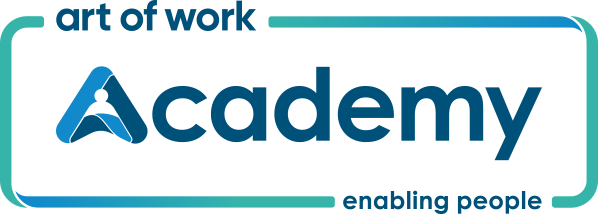
Enabling Controls - Guide Level: Control Effectiveness Assessment using Human Centered Design
Are you confident that the controls your organisation depends upon are reliable and effective?
Writing of procedures is not sufficient to ensure safe work, the more we depend on people doing the right thing at the right time the greater the likelihood of unexpected failure.
Enabling controls tests the robustness of a given control and calibrates for its human factors dependence. Traditional control methodology does not calibrate reliability against human performance.
Enabling Controls teaches you how to diagnose the strength and weakness of a given control and identify opportunities to improve control robustness using human centered design.
who is this for?
THis course is designed train participants as Control Effectiveness Facilitators. It will prpvode you with the skills to lead learning teams fo any critical operational risk activity, irrespective of you subject matter expertise.
If you are interested in putting control effectiveness into practice, this course will give ou the knowledge base, resources and participation in a control effectiveness assessment simulation.
Safety professionals who are interested in building resilience engineering within their organisation through harnessing operational performance input from the frontline, designing controls that are less about bureaucratic accountability and more about creating and ensuring the safe conditions of work?
what is enabling controls?
Enabling controls brings the benefit of harnessing and leveraging the expertise of those that do the work, and the system experts in your organisation.
Learn how to critically analyse the control effectiveness of any given strategy to inform organisational leadership of both the control capacity and control deficiency.
break the audit cycle
How do we measure the effectiveness of critical controls?
We audit them.
We see if they are implemented correctly, we test whether it matches design specifications.
We don't test the outcome or whether a control is working well. We create data as to whether the system is working as imagined, we don't test if the imagined aligns with how work is done, or if that system is any good to begin with.
Audits reinforce the conditions that lead to doing audits. By making audits into the source of truth, doing more audits will often seem as to solution to many problems. When you have doubts, you then need to produce more facts, and thus more audits...
Enabling Controls: Control Effectiveness in Practice will teach you the strategies and tactics to break the audit cycle and learn to guide your organisation to focus less on process details, and more positive outcomes and value produced.
what will you learn?
Control Theory applying the Energy Damage model and Critical Steps
Learn how to measure controls with Human Centred Design
Moving from a reactionary view of accountability to one of engagement seeing people as a solution to harness rather than a problem to control
Learn how to connect the expertise of the frontline with the system experts in your organisations
Incorporate the principles of Human Centred Design into the way systems are planned and resourced in your organisation
This highly interactive and participative program blends individual self-paced learning and reflection with engaging live online group sessions. Each participant will be given access to our interactive platform featuring case studies, videos, podcasts, articles and more, to optimise your learning journey.
The program runs over 1 week and consists of 2 x 4 hour sessions.
Before each module begins, we will invite you to undertake guided, self-led learning, including a thought-provoking video, podcast, and reading collateral to prepare you for the topics featured in the next module.
program structure
-
Moving from accountability to Engagement
Expertise; who gets to decide?
Audit society - Control as imagined - is the control an effective control?
-
Control theory is a concept that explains how to achieve desired outcomes by constantly comparing them to the actual results and making necessary adjustments. In the context of work, it's the difference between what's planned or expected (work as imagined) and what actually happens (work as done).
This theory can be applied to bridge the gap between these two states, ensuring that work is performed as intended and meets the desired standards. It moves beyond mere compliance, where employees simply follow rules and instructions, towards a state of "Better Work," where they are actively engaged and committed to achieving optimal results.
This can be achieved by implementing a feedback loop that continuously monitors performance, identifies deviations from the desired outcome, and takes corrective action. This feedback loop should be transparent and accessible to all stakeholders, so that everyone is aware of the current state of work and can contribute to its improvement.
By embracing control theory, organizations can create a culture of continuous improvement, where employees are empowered to take ownership of their work and are constantly striving to achieve better results. This not only leads to higher quality work, but also increased job satisfaction and a more engaged workforce.
-
Human-centred design is an approach that prioritizes the needs, experiences, and behaviours of people throughout the design process. When applied to the development of controls, this approach can lead to more effective, efficient, and user-friendly solutions.
By understanding the context in which controls are used and the tasks they are intended to support, designers can create solutions that are intuitive, easy to learn, and less prone to errors. This not only enhances the user experience but also contributes to the overall effectiveness of the controls in achieving their intended purpose.
Furthermore, human-centred design can help to identify and address potential usability issues early in the design process, reducing the need for costly and time-consuming changes later on. This can lead to significant cost savings and a faster time to market for new products and services.
In addition, human-centred design can help to ensure that controls are accessible to a wider range of users, including those with disabilities. This can lead to increased inclusivity and a more equitable user experience.
Overall, human-centered design is a powerful tool for creating effective controls that meet the needs of users and support their goals. By taking a user-centric approach, designers can develop solutions that are not only functional but also enjoyable and satisfying to use.
-
Delivering Effective Controls through Human-Centred Design
Evaluate Control Effectiveness: Based on the evidence gathered, assess whether the control is operating as intended and effectively mitigating the identified risk.
Document Assessment Results: Clearly document the assessment results, including the evidence gathered and the conclusion reached.
Communicate Findings: Communicate the assessment results to the relevant stakeholders, including management and the board of directors.
Remediate Control Deficiencies: If control deficiencies are identified, develop and implement plans to remediate them.
Monitor Control Effectiveness: Continuously monitor the effectiveness of controls to ensure they remain effective over time.
20th Novemebr: 10am-12pm
25th Novemebr: 10am-12pm
27th Novemebr: 10am-12pm
2nd December: 10am-12pm
dates
meet our facilitators
-
Moni Hogg is a Senior Health and Safety Specialist with over 20 years of experience, including roles at Fletcher Building and Rocket Lab. She specialises in the Safety II approach and has spent a decade pioneering its methods in New Zealand.
Moni has worked across various industries, delivering training and consulting in sectors like construction, agriculture, healthcare, manufacturing, energy and infrastructure. Her background is in construction management where she was the first female to hold the role of Construction Supervisor for NZ’s Tier One construction company, Fletcher Construction.
She's recognised for her leadership in Safety II, partnering with experts in Australia, and regularly being featured in New Zealand’s industry events, awards and public
-
Kelvin Genn is the Art of Work Solutions’s Managing Director. He is a strategic systems thinker with experience in Human Factors and organizational re-engineering. He developed his systems thinking approach working in the Royal Australian Air Force for 10 years. Following this, for 10 years, he led systems and risk management program across Asia Pacific and Europe with Compass Group Plc, the world’s largest support service company with more than 750,000 employees.
More recently he was working for (SKM) Sinclair Knight Merz as the Global General Manager for Safety and Wellness delivering safety for major project construction in mining, energy and infrastructure.
As a Board Member for NSW Health, Kelvin has worked as the NSW Health Director for Clinical Quality and Patient Safety. He has also worked with the Australian Commission on Safety and Quality in Health Care to develop the national accreditation system for all health care providers across Australia. He was responsible for shaping the state and national agendas for clinical health care safety and quality through provision of expert advice to the NSW Health Management Board and the NSW Minister of Health.
pricing
Book your spot now for AUD$1200*
Includes a follow-up group coaching call
* Excluding Fees & Taxes
why choose art of work academy?
Founders of Safety Differently: we brought the Safety Differently movement, theory and research into practice. We live and breathe the principles and have first-hand experience implementing Safety Differently in organisations across different sectors.
Personal: we create small learning groups to allow you to benefit from individual attention in a ‘safe space’ environment. We will encourage you to understand your leadership style and strengths whilst supporting your areas for development with the potential for coaching sessions.
Collaborative: in your learning ‘cohort,’ you will have the opportunity to expand your network, gain new ways of thinking and test ideas with peers from a range of sectors and businesses.
Practical: we adopt a strong practical focus to enable you to bring your learning to life back in your organisations. Our facilitators are subject matter experts and are immersed in the latest thinking and know-how to put it into play.
how will you learn?
With our blended learning approach, you will receive in addition to the 2 x 4hr live sessions, a suite of companion online content that will help to reinforce your understanding of the different concepts, tactics and strategies covered in the program. These include:
what you will take away
The conversation does not end at the completion of this program. Guide-level Academy courses include:
Six months of access to course materials, workshop recordings
One year membership to art of work solutions lighthouse including access to a ‘private’ Lighthouse Resource Centre - a comprehensive web portal packed with case studies, Master Class content, reference documents and white papers
Invitation to Lighthouse virtual collaboration and networking events featuring topical themes and renowned guest speakers
Access to the Art of Work Solutions Journal Club; a chance to connect, share ideas and learn from like-minded professionals

















